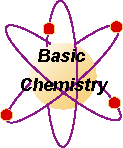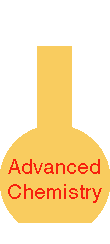Redox Lab
Purpose
Redox stands for Reduction and oxidation. These reactions occur in batteries, photography, rusting, etc. Reduction is when a material gains electrons which are negatively charged. Oxidation occurs at the same time and that material loses electrons. Reduction and oxidation must occur at the same time with the number of electrons lost by one reactant being equal to the electrons gained by another reactant. A strong reducing agent is therefore a weak oxidizing agent. Metals become ions by oxidation. You will do some typical reactions to determine the relative strengths of the reducing and oxidizing agents.
Materials
- Safety items include goggles, apron and latex gloves. Read the MSDS sheets before touching any chemicals and wear the safety equipment properly. Sulfuric acid and silver nitrate will burn the skin.
- You will need small volumes of the following 0.1 M solutions:
magnesium sulfate (MgSO4)
copper sulfate (CuSO4)
zinc sulfate (ZnSO4)
iron sulfate (FeSO4)
silver nitrate (AgNO3)
sulfuric acid (H2SO4)
- Other materials include a well plate, tweezers and marking pen. Assemble small pieces of shiny steel wool (Fe), copper (Cu), zinc (Zn) and magnesium (Mg).
Procedure
- Place the well plate so it's long axis is horizontal. Mark the top of the wells with the solution formulas. On the left side list the four metals.
- Place each solution in the four wells of it's column.
- Place each metal in the six wells of it's row.
- Wait two minutes at room temperature and record the results.
Disposal
Using an eyedropper or micropipet remove the silver nitrate (AgNO3) and place in a labelled container provided by your teacher. Collect and wash the metals and dispose as directed. Wash the other liquids down the drain with lots of water. Clean all equipment and finally your gloves.
Conclusion
-
List the metals in order from most active to least active based on your experiment.
- Write balanced reactions that occured and label reduction, oxidation, reducing agent and the oxidizing agent.
- Which metal ion was most easily reduced?
Which metal was most easily oxidized?
- Why are zinc plates attached to the bottom of steel boats and what are they called?
Back to top
Materials
- Safety items include goggles, apron and latex gloves. Read the MSDS sheets before touching any chemicals and wear the safety equipment properly. Sulfuric acid and silver nitrate will burn the skin.
- You will need small volumes of the following 0.1 M solutions:
magnesium sulfate (MgSO4)
copper sulfate (CuSO4)
zinc sulfate (ZnSO4)
iron sulfate (FeSO4)
silver nitrate (AgNO3)
sulfuric acid (H2SO4)
- Other materials include a well plate, tweezers and marking pen. Assemble small pieces of shiny steel wool (Fe), copper (Cu), zinc (Zn) and magnesium (Mg).
Procedure
magnesium sulfate (MgSO4)
copper sulfate (CuSO4)
zinc sulfate (ZnSO4)
iron sulfate (FeSO4)
silver nitrate (AgNO3)
sulfuric acid (H2SO4)


